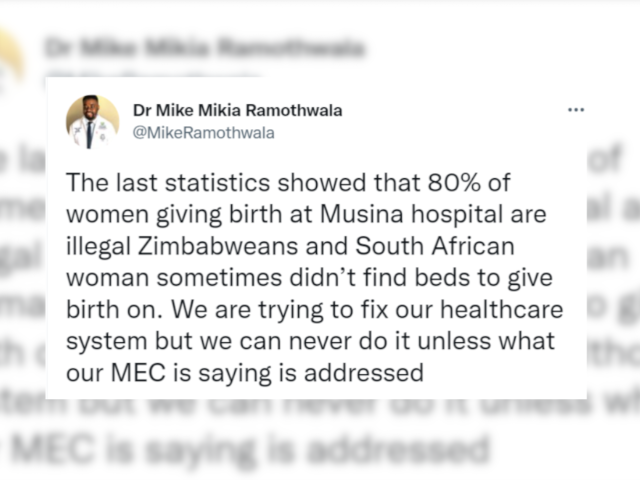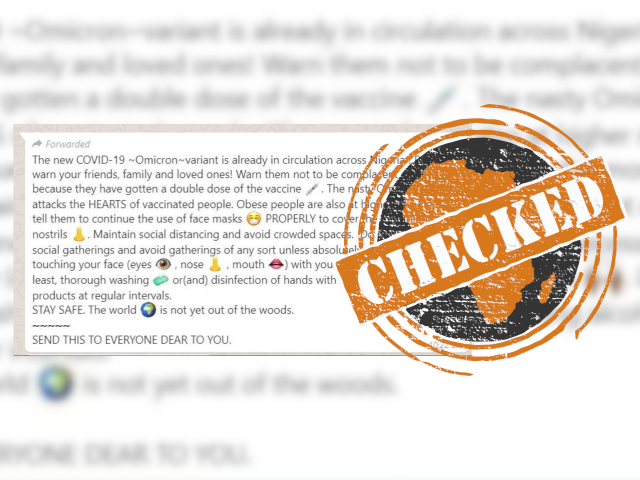-
The newspaper was correct that just over 2% of births in Nigeria are by caesarean section.
-
The most recent data shows a growth of the procedure to just under 3% of all births, but the prevalence varies widely by region and state, and particularly between rural and urban women.
-
Although the 10% threshold is widely cited in discussions about caesarean section rates, it refers back to 1985 and the World Health Organization has reiterated it is not a “recommendation”.
In February 2021, Nigeria’s Punch newspaper asked medical experts about the “low prevalence” of caesarean section deliveries in the country.
In support, the national daily cited a 2019 study which it said found the share of caesarean deliveries in the population was about 2.1%, indicating “the under-utilisation of the service in the country”.
This rate also “reveals a threshold that is far below the 10% recommended by the World Health Organization”, or WHO, the article said.
The newspaper said experts had advocated for more access to cesarean deliveries, to help lower the high rates of death and disease related to pregnancy.
But how do these two statistics about caesarean sections in Africa’s most populous country stack up against the evidence? We checked.
A caesarean section is the delivery of a baby through a surgical incision in the mother’s abdomen and uterus. Some caesarean deliveries are planned, but many are done when complications arise during labour.
The study quoted by Punch is a secondary analysis of the 2013 Nigeria Demographic and Health Survey, published in the open-access BMJ journal.
The nationally representative survey collected data on 31,868 live births in the five years preceding the survey, from mothers aged 49 and younger. It was conducted from February to May 2013 and found the prevalence of caesarean section delivery to be 2%.
The 2018 Nigeria Demographic and Health Survey, the fifth of such surveys, is the most recent. It collected data on 34,193 live births and found the prevalence of caesarean section delivery to be 2.7%, which it rounded up to 3%.
There were regional differences in caesarean rates. They were higher in urban (5%) than in rural areas (1%). The lowest rates were in the North West and North East regions at 1%, and highest was in the South West at 7%.
When states are considered, the rate was as high as 13% in Lagos and less than 1% in Zamfara, Sokoto, Kebbi and Yobe.
Caesarean rates vary widely by community
As the demographic health survey is community based, it normally finds lower caesarean rates than an institution-based survey, Mairiga Abdulkarim, professor of reproductive health at the University of Maiduguri, in northeastern Nigeria, told Africa Check.
“Any survey that focuses on deliveries at medical facilities will get significantly higher rates of caesarean sections. At the University of Maiduguri Teaching Hospital the rate is up to about 12% and it is even higher in some other university teaching hospitals,” she said.
One reason for this was that teaching hospitals detect complications earlier and recommend a caesarean section, Abdulkarim said.
And because they have the expertise, they also handle patients with complications referred from other health facilities.
Rates rise with access to information
The 2017/18 Multiple Indicator Cluster Survey found a similar rate for caesarean sections. Of women aged 15 to 49, who had their most recent live birth in the previous two years, 2.8% had delivered by caesarean section.
This survey was done from September 2016 to January 2017 by Nigeria’s national bureau of statistics and other organisations such as Unicef and the WHO.
But the current prevalence of caesarean sections in Nigeria should be higher than 3%, according to Uchenna Onwudiegwu, professor of obstetrics and gynaecology at the Obafemi Awolowo University at Ile-Ife in southwestern Nigeria.
His experience was that Nigerians were now more open to the surgery as they were better informed about it. “However, mostly in the rural areas, caesarean section is considered a failure of womanhood. So women risk their lives to have a vaginal birth.”
However, more women are having the surgery for elective reasons such as to avoid labour pains or ensure their child is delivered on a specific date, Onwudiewgu told Africa Check.
Has the international health agency specified such a standard?
It is not correct to say that the WHO has recommended a threshold for caesarean section rates, Elizabeth Noble, information officer at the WHO’s sexual and reproductive health and research department, told Africa Check.
“The WHO does not recommend a threshold for caesarean sections at population level. Every effort should be made to provide caesarean sections to women in need, rather than striving to achieve a specific rate,” she said.
Many documents on caesarean section rates make reference to a statement by reproductive health experts at the 1985 conference on appropriate technology for birth in Brazil, partly organised by the WHO.
The experts unanimously adopted several recommendations. One was that “there is no justification for any region to have a [caesarean] rate higher than 10 to 15%.”
Following two wide surveys carried out by the organisation, the WHO released a new statement on the caesarean rate in April 2015.
The statement noted that one of the studies showed that “below a caesarean section rate of 10%, maternal and neonatal mortality decreased when caesarean section rates increased. As caesarean section rates increased above 10% and up to 30% no effect on mortality rates was observed”.
Noble said the reference to 10% in the statement does not amount to a recommendation by the WHO.
“In the latest statement on caesarean section rates, the WHO does not adopt any caesarean section rate as ‘ideal’ or ‘optimal’. The threshold of the 10% was found for the association between caesarean section and maternal and newborn mortality,” she said.
‘Recommendation’ from 1985 shouldn’t be globally applied
Noble said that due to a lack of data at population level, the “association between caesarean section rates on other outcomes, such as maternal and perinatal morbidity, paediatric outcomes, and psychological or social well-being could not be determined”.
More research is therefore needed. The health agency noted that the 1985 panel’s conclusion was “drawn from a review of the limited data available at the time, mainly from northern European countries that demonstrated good maternal and perinatal outcomes with that rate of caesarean sections.”
The WHO’s recommendations on non-clinical interventions to reduce unnecessary caesarean sections, published in 2018, also noted that the rise in the non-medical use of the procedure is a universal problem.
These also state that “the ideal or optimal caesarean rate is unknown”.
Photo: FATI ABUBAKAR





Add new comment